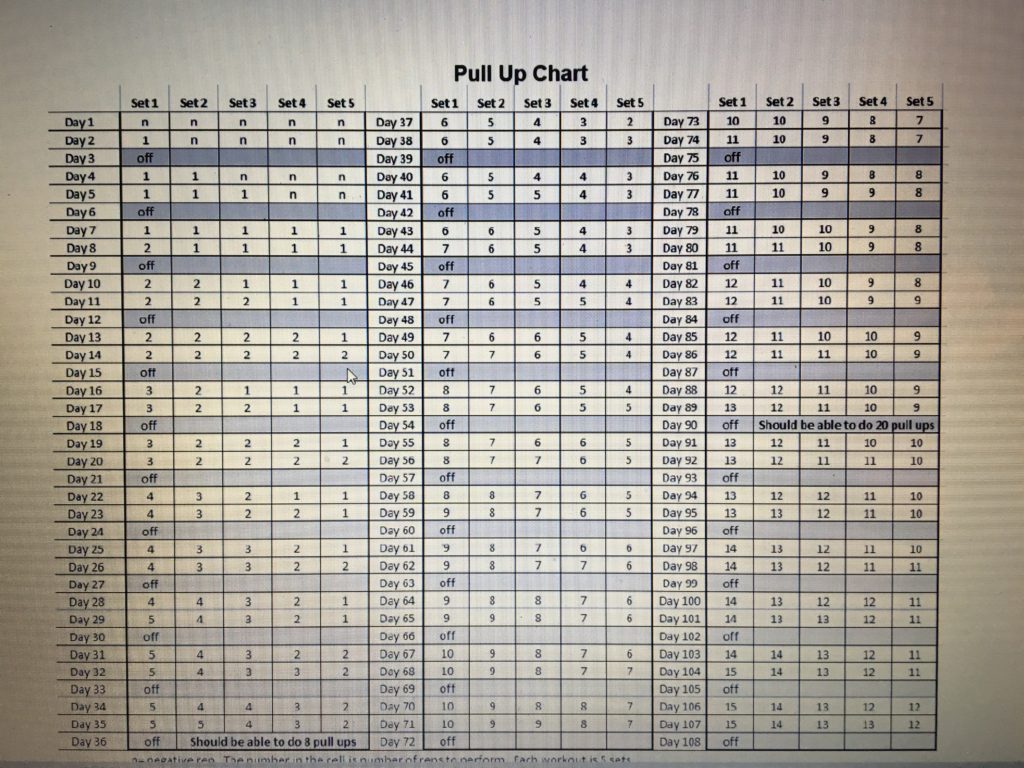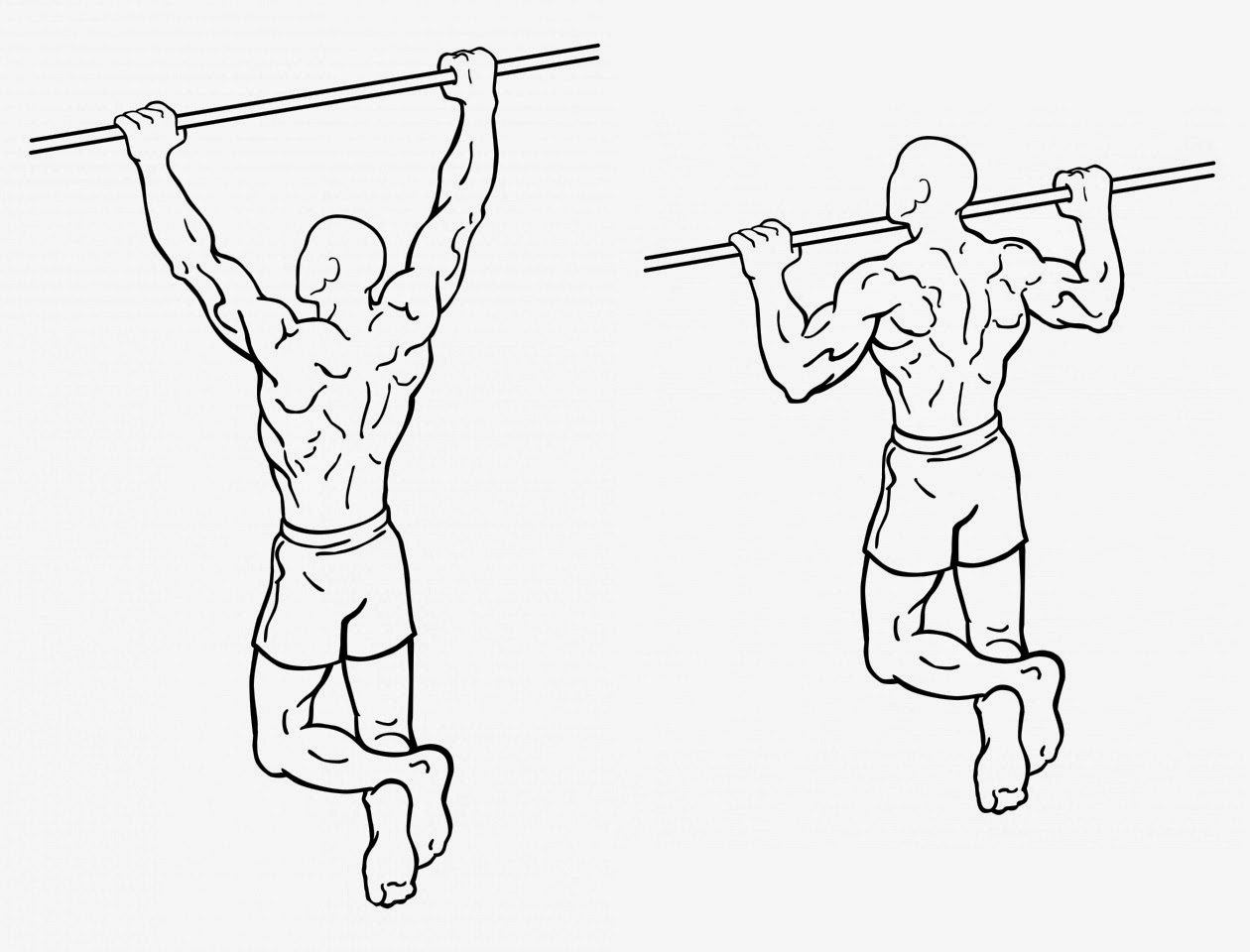I am continually searching for ways to improve my training. Some things work and some things don’t. I try not to get frustrated at the things that don’t because it’s all part of the process. However, occasionally I make a decision that is a game changer. Something that exceeds my expectations and makes me wonder why I didn’t try it sooner. This is what occurred recently when I started a pull-up program. It was something I wanted to try for months but for one reason or another kept putting off. Finally, when a mentor of mine sent me a tactical training book that contained a pull-up program, I had no more excuses. I started the program that week and it has been the best training decision I’ve made in the last six months.
Yes, They Are That Important
I consider pull ups the very close step child of the barbell movements. If the barbell movements are 1a, consider pull-ups 1b. The first thing I recommend to anyone seeking advice in training is to learn the barbell movements. The hinge, squat, and pressing movements can be done with the bar using heavy weight in a variety of ways that resemble natural human movement. Even though pulls, or rows as they are commonly called, can be done using a barbell, there is not an exercise that is easier to learn and arguably more effective than a pull-up. This is why doing pull-ups and doing them often is the second thing I suggest to people seeking advice. A program that emphasizes the barbell movements along with pull-ups sets a great base for whatever your goals may be.
Although Difficult, Do Them Correctly
Pull-ups are hard. This is commonly the reason people don’t do more of them. However, this is exactly the reason you need to do them. In training, you will make the greatest improvements when you focus on the things you don’t enjoy or the things that are most difficult. In my experience, people are intimidated by the pull-up. They get discouraged from trying and failing and simply give-up and move onto something else. Or they hear people say that they can accomplish some ridiculous number of pull-ups and get more discouraged from trying to get their goal of one. Well, first off let me say this, if someone tells you that they can do twenty pull ups they are either very strong, very light, or very much a liar. I am not talking about whatever they call those things they do in CrossFit, I refuse to call them pull-ups, or the half-way reps that you see most people do in the gym. I am talking about a full, strict pull-up. Elbows locked out at the bottom, chin above the bar at the top. This type of pull-up shouldn’t be exception, it should be the rule.
Not Just a Back Exercise
The full, strict pull-up will test strength throughout your entire upper body. It’s not an isolated back exercise by any means. Besides the muscles of the back, pull-ups challenge your grip and core strength unlike many exercises. If someone can crank out 15-20 strict pull-ups they most likely have a six pack. Even though your lats get most of the attention from doing pull ups, it is easy to feel your biceps, forearms, and shoulders working. If you are fortunate enough to be able to do many of them, you are well aware of the pump you experience throughout your entire upper body.
My Experience
I want to end this article by telling you a little bit about what I experienced going through this program. The complete program was 108 days long. You had two days on and one day off of pull-ups. The program starts off by having you do eccentric or negative reps. However, since I have been doing pull-ups regularly I was able to start on day 55. Each day you would do five sets. And each day the program would have you do one more rep than you did the previous day. It would add the rep to different sets depending on what day you were on. For example, if on day 55 I did five sets of 9,8,7,6, and 5 pull ups the next day I would attempt 9,8,7,6, and 6. This goes on and on with two days on and one day off until you reach day 108.
When I started the program I was able to get between eight and ten strict pull-ups. Also, before starting the program I was doing pull-ups one day a week completing as many sets as I had to get to 50 reps. It was taking me about 8 or 9 sets to complete 50 strict pull-ups. Now that I am finished with the program I can complete somewhere between 14 and 16 strict pull ups and I completed 54 pull-ups in five sets. At a body weight of 265.
Things I noticed:
- Grip got stronger, then worse (from fatigue), and ended stronger then I started.
- The pump I got from doing that many strict pull-ups was insane, felt like I was training arms.
- Lats got wider.
- Forearms got bigger.
- Abs were more sore than ever before doing pull-ups.
- Form got better.
I’ve attached the pull-up program to the bottom of this page.
Stay Tuned
This article was a PSA for the need to do pull-ups. Stay tuned for next week’s article where I will go into detail about how to do a correct pull-up and how to progress pull-ups. Anyone from someone who has never done a pull-up, to someone who thinks he can do twenty is going to want to read and try out the tips in next week’s article. As always, thanks for reading and please share and comment on any topics you may be interested in the future.

This program comes from the book Built to Endure, Training the Tactical Athlete by Mike Prevost. I highly recommend it to anyone looking into programs for bodyweight exercises.



Hi, just curious if you still have Mike Prevost’s ebook. It doesn’t seem to be available anywhere on the web